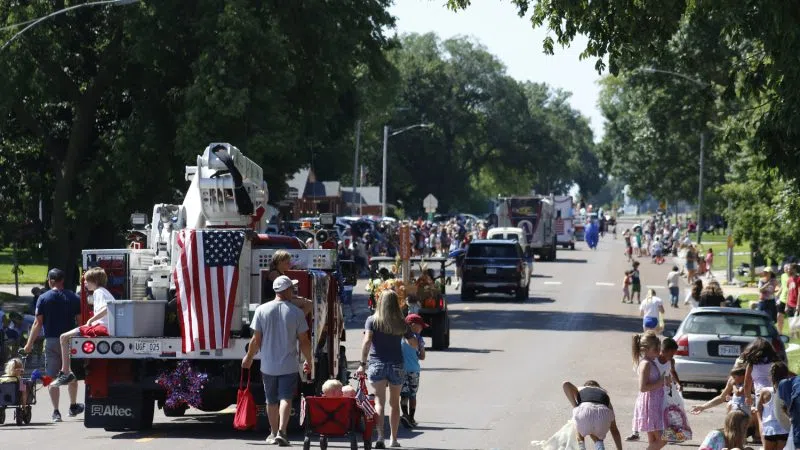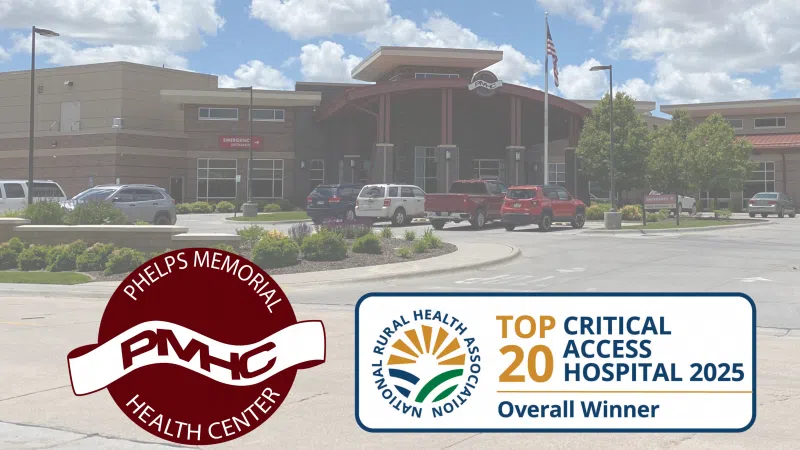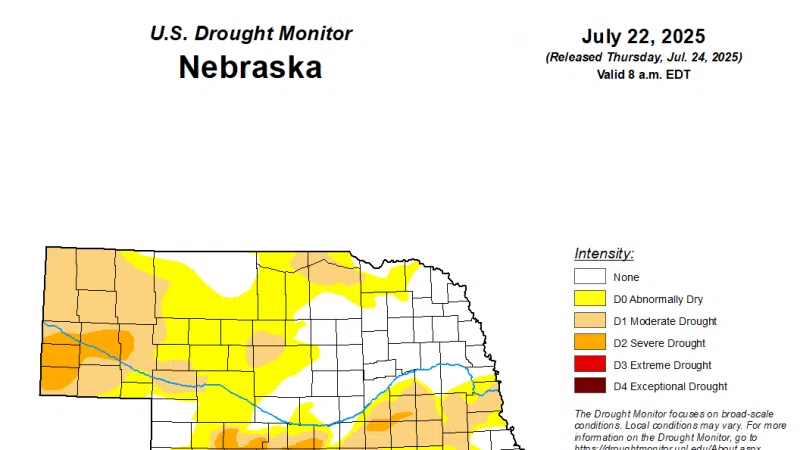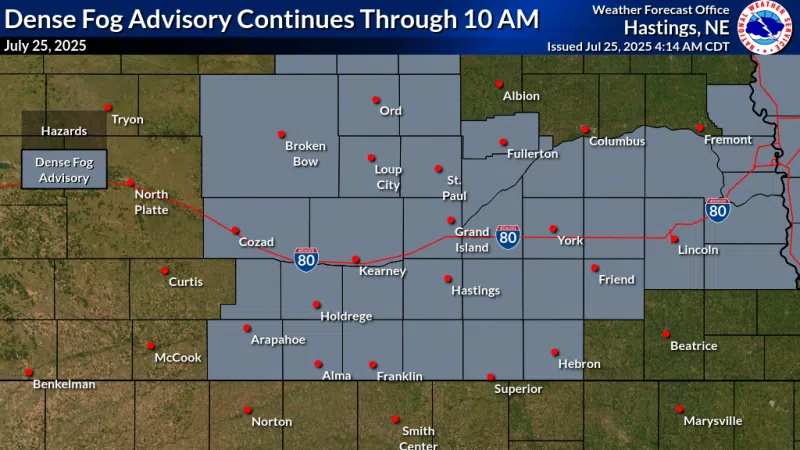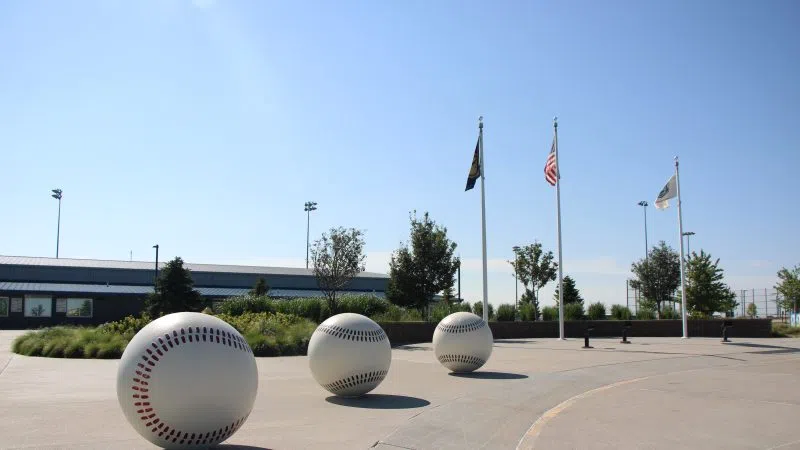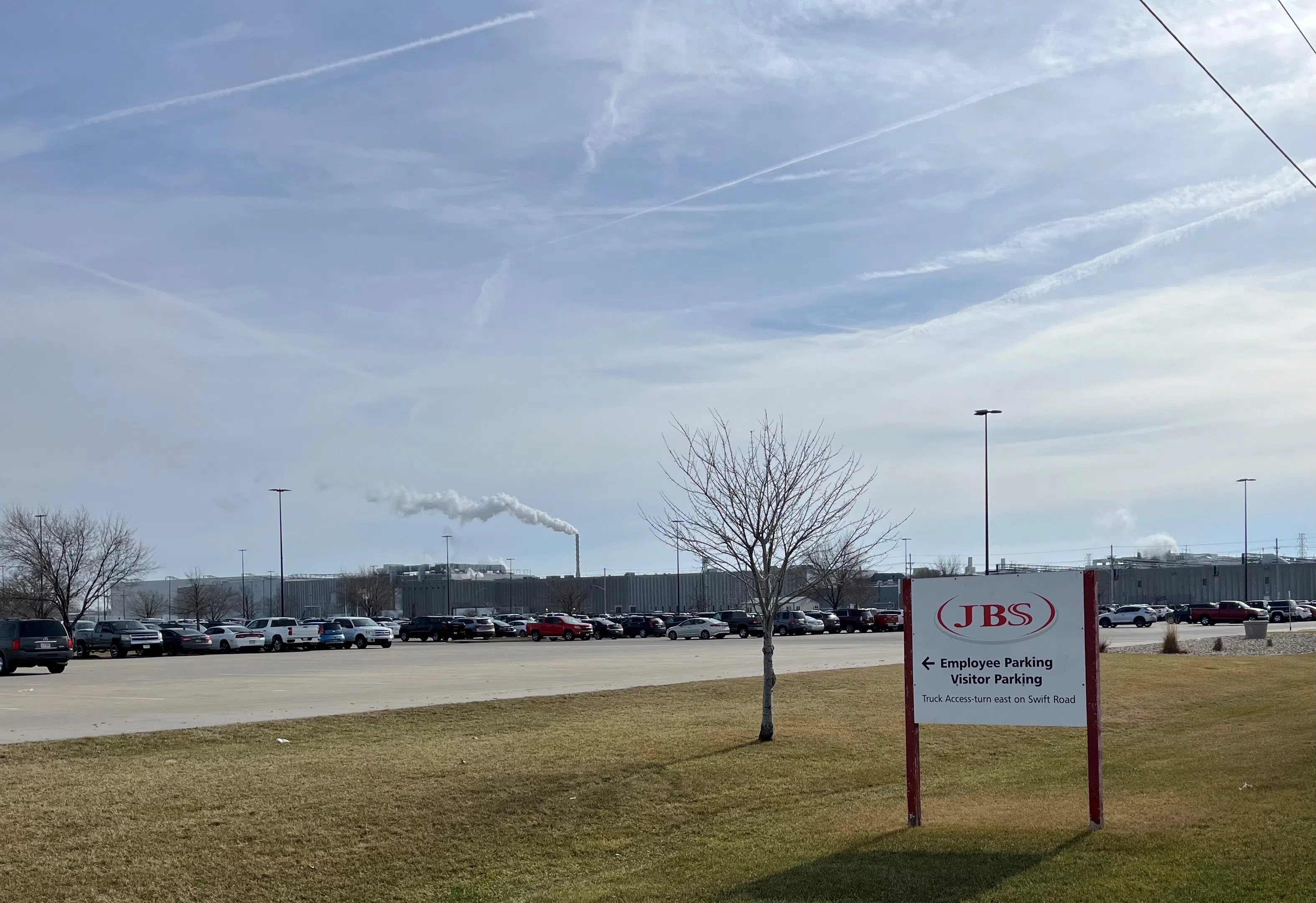
There was a large sewage lagoon breach at the JBS plant east of Grand Island on Jan. 6. (Carol Bryant, Central Nebraska Today)
GRAND ISLAND — Officials from the Nebraska Department of Environment and Energy (NDEE) distributed pages with written directions concerning how to access public documents from an NDEE website about the JBS meatpacking plant at the Jan. 30 Hall County Board of Commissioners meeting.
The action occurred after a Jan. 6 north wastewater lagoon breach at the JBS plant at 555 S. Stuhr Road.
I have reviewed a number of those public documents dated beginning Jan. 6, which provided information for this story. A Jan. 6 NDEE document said that 5 million gallons of wastewater from a 7 million gallon wastewater lagoon “had discharged from the lagoon to an unnamed tributary of Wood River.” Another NDEE document dated Jan. 6 stated that the north lagoon had a capacity of 10 million gallons. JBS said an “estimated release of 4 million gallons left the lagoon, and only 2 million gallons of wastewater left the facility.
The material discharged from the anaerobic lagoon is partially treated wastewater with a significant portion consisting of sludge.” The north lagoon “had a structure failure at the bypass connection manhole located on the east side of the lagoon.” A Jan. 8 email from Brad Pracheil with NDEE gave a description of the north lagoon problem. The email said that a berm for the lagoon “gave way” resulting in the wastewater release.
The JBS plant closed on Jan. 6 and reopened Jan. 8, one document said.
A standing-room only group of people attended the Jan. 30 Hall County Board of Commissioners meeting to express their concern about how the breach could affect their drinking water and swimming in lakes near their homes at various subdivisions east of JBS. The subdivisions are built around lakes. People at the Jan. 30 live at the lake subdivisions. Commissioner Jane Richardson (who lives at Kuester Lake) had invited NDEE officials to attend the Jan. 30 meeting, and she said Jan. 30 she had reviewed public documents on the NDEE website pertaining to JBS over approximately the last six months. No JBS staff attended the Jan. 30 meeting. Commissioners approved at the Jan. 30 meeting having Richardson draft a letter to JBS that will be reviewed at the Feb. 13 Board of Commissioners meeting. Copies of the letter will be sent to area state senators. JBS officials have been invited to attend the Feb. 13 meeting.
Chad Nabity, community development director for the City of Grand Island, provided CentralNebraskaToday.com on Feb. 6 with a map showing lakes east of the JBS plant.
He wrote on the map, “All houses east of Shady Bend Road and south of the Wood River are on individual wells and septic systems.”
Lakes identified by name on the map are Anderson Lake, Kuester Lake, Eagle Lake, Hidden Lake, Twin Lakes, Davis Lake, and Paradise Lake. The map also shows six unnamed lakes.
A Jan. 6 document gives a timeline of what occurred that day:
- *Between 5 a.m. and 6 a.m. Jan. 6: Staff identified lagoon dike failure.”
- *6:45 a.m.: JBS ceased all plant production and closed the facility.
- *8 a.m.: NDEE was contacted “to report an ongoing release of wastewater from the facility’s 7 million gallon wastewater lagoon. JBS … estimated at the time that 5 million gallons of wastewater had discharged from the lagoon to an unnamed tributary of Wood River.
- *10:30 a.m.: NDEE staff “mobilized and traveled to the facility.”
- *12:20 p.m.: NDEE arrived at the facility and contacted Corbin Utley of JBS. Utley is JBS’ environmental manager at the plant.
- *12:40 p.m.: NDEE and JBS staff traveled to the wastewater lab for the facility. JBS staff collected 6 water samples offsite to “discern the concentration of the discharge along Wood River.” NDEE requested sample results from JBS by email once they became available.
- *12:54 p.m.: NDEE began stream assessment at the point of discharge from JBS.
- *1:20 p.m.: NDEE collected upstream samples near the facility employee entrance.
- *1:30 p.m.: NDEE collected stream samples at the first road crossing downstream from JBS.
- *Between 2:30 p.m. and 3 p.m.: JBS had dammed the lagoon to stop the discharge at the east side of the north lagoon.
- *2:40 p.m.: NDE traveled to the North Gunbarrel Road crossing over the Wood River where samples were collected. Fish kill was identified at this location.
- *3:42 p.m.: NDEE arrived at the Bader Park Road crossing over the Wood River. “There was no indication that the discharge had reached this location.
- *3:50 p.m.: NDEE returned to the Lincoln NDEE office.
Jan. 7 NDEE Activity
- *11 a.m. Jan. 7: NDEE met with Nebraska Game and Parks Commission (NGPC) staff to collect water quality samples and fish counts along Wood River. A total of 4 locations were sampled.
- *Noon Jan. 7: NDEE and NGPC counted and collected fish for 100 yards at the 7th Road crossing over the Wood River.
- *1:30 p.m. Jan. 7: NDEE and NGPC counted and collected fish for 100 yards at the B Road crossing (west of 3rd Road) over the Wood River.
- *2:40 p.m. Jan. 7: NDEE collected water quality samples and measured field parameters at the North Gunbarrel Road creasing over the Wood River. Dead fish were also counted and identified for 50 yards at this location.
- *5:53 p.m. Jan. 7 communication from Corbin Utley to Phillip Halsted with NDEE said that 4 million gallons had left the north lagoon. “JBS believes less than 2 million gallons had left the property. All of the wastewater that was on property has been sucked up and put in south lagoon.”
Jan. 23 JBS plant visit
An NDEE memo dated Jan. 23 from Jason Windhorst describes a Jan. 23 visit to JBS. Windhorst, Matt Brauch, and Dane Pauley from NDEE travelled to JBS “to conduct a followup site visit and drone survey of the site. The purpose of the site visit is to assess updates conducted by the facility and identify any additional problems associated with the previous spill.”
After the NDEE team arrived, Pauley conducted a drone survey of the north lagoon and the south lagoon still in operation.
- *”Observations on the facility property indicate residual sludge and grading material being tracked through the loading and unloading areas.”
- *”The city street on the north side of the facility is partially covered with sludge from the earlier discharge and is mixed with snow and ice that is melting and discharging into the tributary.”
- *”The tributary and Wood River and visible sludge deposits along the edges of the water. …Thick sludge deposits are visible from Swift to the (Grand Island Wastewater Treatment Facility) discharge in the channel and banks.
- *”A cleanup/vac truck was observed attempting to remove material from the tributary for a short time and the area shortly after beginning.”
The NDEE documents contain numerous photos showing wastewater contamination in Wood River, discharged wastewater in the parking lot that was being tracked onto Swift Road, and dead fish.
Phillip Halsted with NDEE wrote in a document dated Jan. 8 that he had received communication from Corbin Utley, environmental coordinator with JBS. Halsted wrote, “Stockpiles of solids are waiting to be taken by contractors to landfills.”
JBS did not respond to an email seeking comment.



